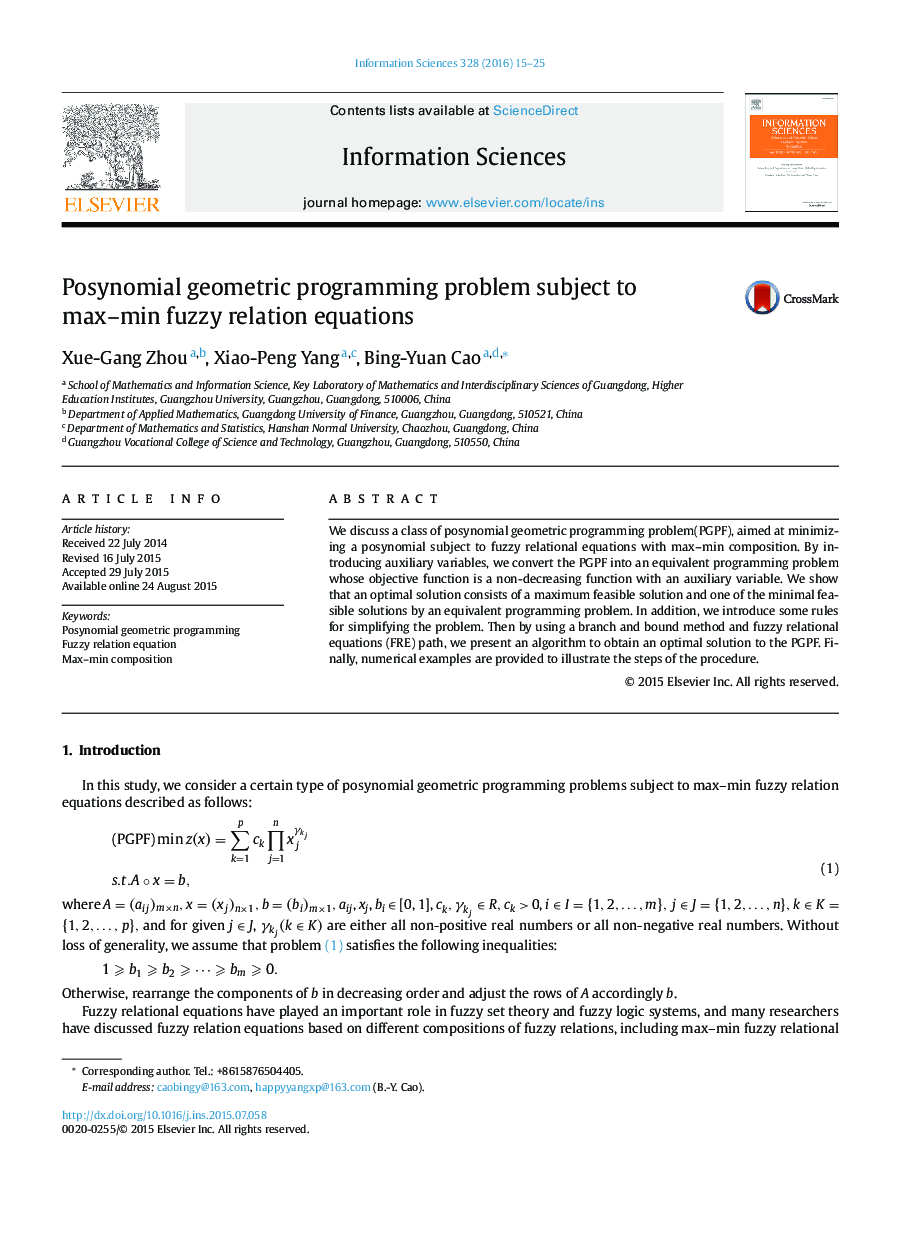| Article ID | Journal | Published Year | Pages | File Type |
|---|---|---|---|---|
| 392938 | Information Sciences | 2016 | 11 Pages |
We discuss a class of posynomial geometric programming problem(PGPF), aimed at minimizing a posynomial subject to fuzzy relational equations with max–min composition. By introducing auxiliary variables, we convert the PGPF into an equivalent programming problem whose objective function is a non-decreasing function with an auxiliary variable. We show that an optimal solution consists of a maximum feasible solution and one of the minimal feasible solutions by an equivalent programming problem. In addition, we introduce some rules for simplifying the problem. Then by using a branch and bound method and fuzzy relational equations (FRE) path, we present an algorithm to obtain an optimal solution to the PGPF. Finally, numerical examples are provided to illustrate the steps of the procedure.
